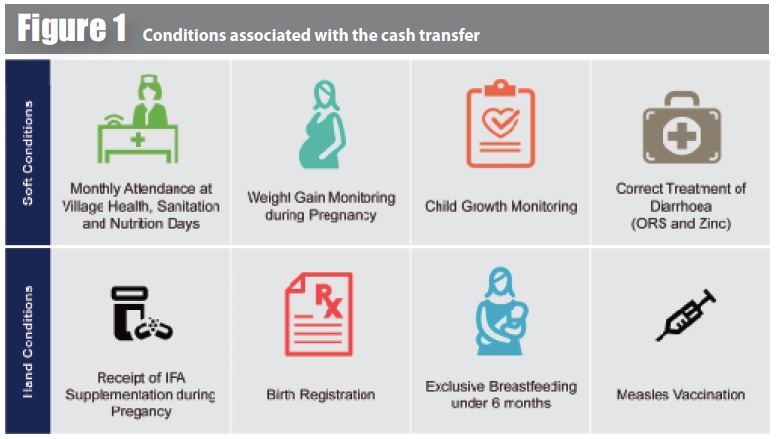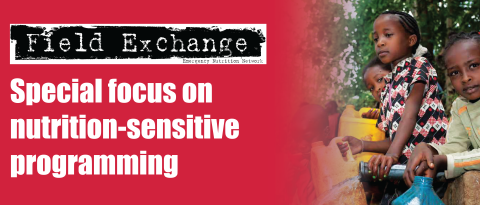Review of programmes integrating family planning with food security and nutrition
Summary of research1
Location: Global
What we know: Family planning and reproductive health is an important underlying influence on nutrition of mothers and children.
What this article adds: USAID conducted a landscape analysis of 102 USAID-funded programme efforts to integrate family planning with nutrition and/or food security interventions. It found that family planning, nutrition and food security interventions are delivered as part of larger integrated packages, such as health and agriculture; are built into programme design; and involve a range of providers and platforms. Three models were identified: family planning education; family planning education and counselling; and family planning education, counselling, and commodity provision. Despite limitations (e.g. inadequate documentation of the integration process and lack of evidence of effectiveness), potential promising practices for integration were identified. Recommendations include: clearer definitions; harmonised reporting requirements; funding of rigorous research to test effectiveness of integration models; and development of guidance for programmes integrating family planning with nutrition or food security interventions.
 The U.S. Agency for International Development (USAID) Multi-Sectoral Nutrition Strategy 2014-2025, launched in May 2014, aims to reduce chronic malnutrition as measured by stunting by 20% over five years. The foundation of this strategy is the growing body of evidence emphasising the need to enhance nutrition-specific interventions with multi-sectoral nutrition-sensitive interventions to tackle the underlying and systemic causes, as well as immediate causes, of malnutrition. Family planning and reproductive health are important interventions that are often overlooked in this context, but that have been prioritised in the USAID nutrition strategy. To date, there has been limited documentation on integrating family planning with food security and nutrition programming. In an effort to fill the evidence gap in this area, the Food and Nutrition Technical Assistance III Project (FANTA) conducted a desk review to identify, review and synthesise related programmatic experiences, and to document lessons learned and promising practices to inform future programming.
The U.S. Agency for International Development (USAID) Multi-Sectoral Nutrition Strategy 2014-2025, launched in May 2014, aims to reduce chronic malnutrition as measured by stunting by 20% over five years. The foundation of this strategy is the growing body of evidence emphasising the need to enhance nutrition-specific interventions with multi-sectoral nutrition-sensitive interventions to tackle the underlying and systemic causes, as well as immediate causes, of malnutrition. Family planning and reproductive health are important interventions that are often overlooked in this context, but that have been prioritised in the USAID nutrition strategy. To date, there has been limited documentation on integrating family planning with food security and nutrition programming. In an effort to fill the evidence gap in this area, the Food and Nutrition Technical Assistance III Project (FANTA) conducted a desk review to identify, review and synthesise related programmatic experiences, and to document lessons learned and promising practices to inform future programming.
The authors used multiple methods to obtain programme documents on integrated family planning programming for the review, including coordinating with USAID staff and relevant technical support projects; direct requests to programme staff; and searches on organisation and/or programme websites, Google, and USAID’s Development Experience Clearinghouse website. In addition, telephone interviews were conducted with programme staff in the development of three case studies included in the review paper. The authors collated a wide range of materials, such as programme documents (including evaluation, annual, final and research reports), technical briefs, PowerPoint presentations and videos.
They identified 518 programmes for initial consideration for inclusion in the review. Each programme was screened to determine if it met primary inclusion criteria; if so, it was then screened for integration criteria. Screening was carried out by a team of 12 people using a 51-item screening tool. The screening process resulted in 102 USAID-funded programmes operating between 2003 and 2013 being included in the review.
Findings showed that family planning, nutrition and food security interventions are delivered as part of larger integrated packages, either as health packages or packages within other sectors, such as agriculture and livelihoods. Family planning and nutrition or food security interventions are primarily built into programme design from the onset as part of a larger health package, especially maternal, newborn, and child health; integrated management of childhood illness (IMCI); or food security and livelihood packages, rather than being integrated after programmes are already underway.
The authors identified three models of family planning integration into nutrition and food security programmes. These include: (Model 1) family planning education (used in 18.6% of programmes); (Model 2) family planning education and counselling (used in 17.6% of programmes); and (Model 3) family planning education, counselling and commodity provision (used in 63.7% of programmes). Referrals for family planning services were also found in all three models.
A range of platforms are used for integrated service delivery across all three models identified. For family planning services, examples of platforms are mobile clinics and rally posts (central spots where parents come with their children for growth monitoring, immunisation, and other basic services). Other kinds of platforms include farmer field days and nutrition rehabilitation sessions. Some family planning services are targeted to specific lifecycle contact points, for example during antenatal care, birth and discharge, postpartum care, or childhood programmes. More often, however, programmes adopt a continuum-of-care approach that targets several or all contact points. A range of providers are used in the delivery of integrated family planning programmes, some of which are community-based (e.g. community health workers, volunteers and groups), and some of which are facility-based (including private and government health workers).
The authors recognise the limitations of the documentation of integrated family planning programmes. The review had a broad scope: to carry out a landscape analysis of programme efforts to integrate family planning with nutrition and/or food security interventions. It captured a broad range of integration strategies across health and multi-sectoral programmes. However, the large scope and the heterogeneity in the types of programmes, including the interventions and outcomes measured, posed challenges in the analysis and synthesis of findings. Specifically, the review revealed weak programme documentation on the integration process; limited information on the process of referral to family planning services; variation in measurement of family planning across programmes; and an evidence gap on the effectiveness of different family planning models. This underscores the need for stronger programme documentation on the integration process and more systematic monitoring and evaluation efforts to capture the success of integrated programmes.
The findings nevertheless reveal potential promising practices for integration. Programmes could build on existing platforms (such as farmer field days, nutrition weeks and growth monitoring sessions) to help reduce costs, achieve rapid results, and prime communities for expanded services. Programmes could focus on the 1,000-day period (from pregnancy until the child is two years old) through a continuum-of-care model to allow programmes to reach mothers at critical times for both nutrition and family planning. The right timing of promotion messages will ensure that messages are not too early or too late for the behaviour being promoted. Home visits offer an opportunity for nutrition and family planning counselling that can be tailored to individual needs and also provide an opportunity to target and involve family members who influence uptake of nutrition and family planning practices being promoted. Ensuring multiple contacts also seems to be important. Multiple contacts must happen at community and facility level to facilitate integration by helping to reinforce consistent messages, meet increased demand generated at the community level, and enable provision of a greater mix of contraceptive methods. Integrated programmes should also engage men as well as women. Gender integration is a critical component to overcoming barriers women face not only in using family planning but also in adopting optimal nutrition behaviours and reaching their full potential in the agricultural and economic sectors.
The review findings point to several recommendations for consideration by USAID in their efforts to further strengthen and promote nutrition and family planning integration or food security and family planning integration more systematically. Recommendations include: define family planning and nutrition integration and family planning and food security integration, including success for this type of integration; harmonise reporting requirements; ensure adequate funding and time for implementation of integrated programmes; fund rigorous research focused on testing effectiveness of integration models; develop guidance for and provide technical assistance to programmes integrating family planning with nutrition or food security interventions; and promote dialogue and cross-learning across health and multi-sectoral programmes.

Footnotes
1 Borwankar, R and Amieva, S. (2015). Desk Review of Programs Integrating Family Planning with Food Security and Nutrition. Washington, DC: FHI 360/FANTA. http://www.fantaproject.org/sites/default/files/resources/FANTA-PRH-FamilyPlanning-Nutrition-May2015_0.pdf


